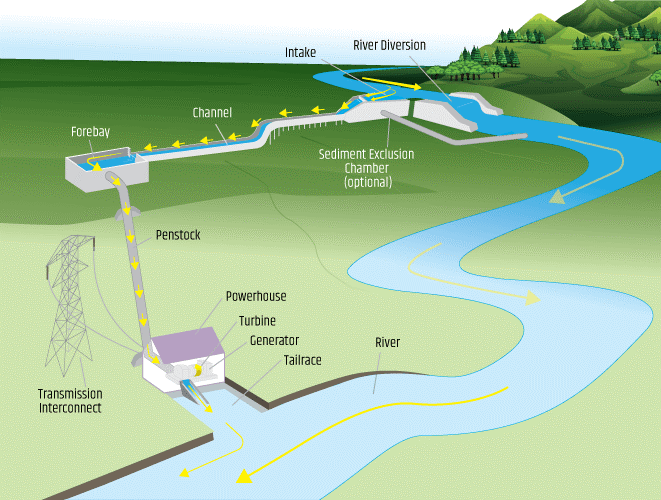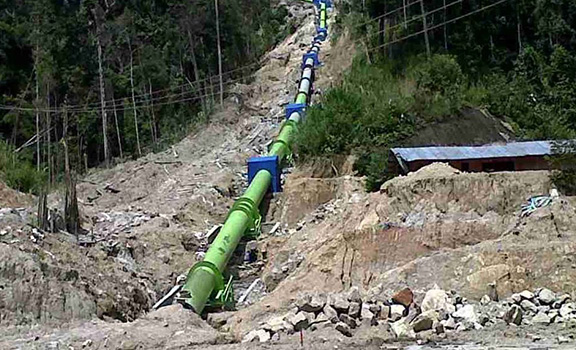SERVICES
Hydro Projects
Hydropower plants capture the energy of falling water to generate electricity. A turbine converts the kinetic energy of falling water into mechanical energy. Then a generator converts the mechanical energy from the turbine into electrical energy.
Hydro plants range in size from “micro-hydros” that power only a few homes to giant dams like Hoover Dam that provide electricity for millions of people.
Most conventional hydroelectric plants include four major components:
- Dam. Raises the water level of the river to create falling water. Also controls the flow of water. The reservoir that is formed is, in effect, stored energy.
- Turbine. The force of falling water pushing against the turbine’s blades causes the turbine to spin. A water turbine is much like a windmill, except the energy is provided by falling water instead of wind. The turbine converts the kinetic energy of falling water into mechanical energy.
- Generator. Connected to the turbine by shafts and possibly gears so when the turbine spins it causes the generator to spin also. Converts the mechanical energy from the turbine into electric energy. Generators in hydropower plants work just like the generators in other types of power plants.
- Transmission lines. Conduct electricity from the hydropower plant to homes and business.

Before you decide to add hydropower plant to a dam or running river, have a hydropower engineer / Consultant to review on power out puts and consult with the local resource agencies to be sure you can obtain any permits that are required.
Jet Tech is developing one no hydropower plant unit in Bukidnon in Mindanao province to come up with an Indian hydro turbine supplier to implementation of this project.


